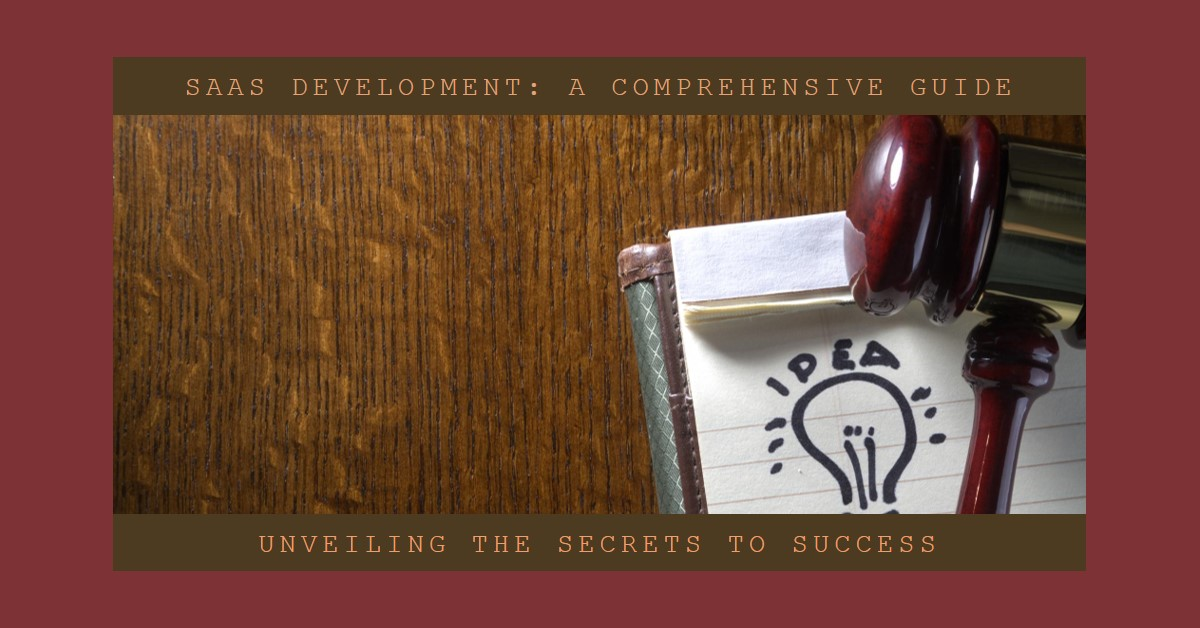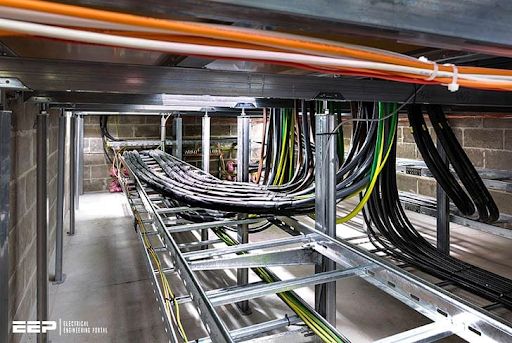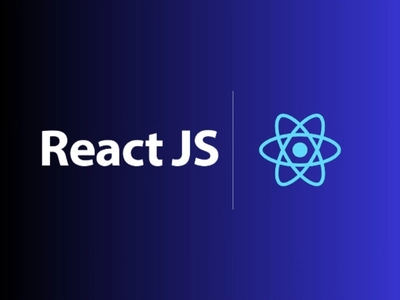Unveiling the Secrets of SaaS Development: A Comprehensive Guide to Success

In the rapidly evolving landscape of technology, Software as a Service (SaaS) has become a cornerstone for businesses seeking scalable, efficient, and cost-effective solutions. Behind the scenes of every successful SaaS platform lies a skilled SaaS developer, driving innovation and shaping the digital future. In this comprehensive guide, we will explore the key aspects of becoming a proficient SaaS Development, from essential skills to best practices, ensuring you’re equipped for success in this dynamic industry.
Understanding the Role of a SaaS Developer
At the heart of any successful SaaS platform is a talented SaaS developer. These individuals are the architects, builders, and problem solvers who transform ideas into functional, user-friendly software. SaaS developers leverage their programming expertise to design, develop, and maintain applications that operate seamlessly in a cloud-based environment. The role demands a versatile skill set that encompasses both technical and creative aspects, making SaaS developers integral to the entire software development life cycle.
Transitioning from Traditional Development to SaaS
For developers accustomed to traditional software development methodologies, transitioning to the SaaS model may seem like a daunting task. However, this shift offers unparalleled advantages in terms of scalability, accessibility, and cost-effectiveness. To ease this transition, developers should focus on embracing cloud-native technologies, adopting microservices architecture, and mastering containerization tools like Docker. By doing so, developers can create applications that are not only agile but also resilient to the dynamic demands of the modern digital landscape.
The Importance of Active Learning in SaaS Development
In the ever-evolving world of technology, the importance of active learning cannot be overstated. SaaS developers must be proactive in staying updated with the latest industry trends, programming languages, and cloud computing platforms. Continuous education through online courses, workshops, and hands-on projects not only sharpens technical skills but also fosters adaptability. This commitment to learning ensures that SaaS developers remain at the forefront of innovation, ready to tackle the challenges of tomorrow.
Essential Skills for SaaS Developers
The skill set required for SaaS development extends beyond traditional programming languages. Successful SaaS developers possess a unique blend of technical, analytical, and interpersonal skills. Let’s delve into the key competencies that set exceptional SaaS developers apart.
Proficiency in Cloud Technologies
Given that SaaS applications operate in a cloud-based environment, proficiency in cloud technologies is non-negotiable for SaaS developers. Platforms like Amazon Web Services (AWS), Microsoft Azure, and Google Cloud Platform (GCP) are essential tools in the SaaS developer’s arsenal. Mastering these platforms empowers developers to build scalable, resilient, and secure applications that can meet the demands of users worldwide.
Mastery of Programming Languages
While proficiency in programming languages like Java, Python, and JavaScript is foundational, SaaS developers must go beyond basic knowledge. They should master the intricacies of these languages to develop efficient, well-structured code. Additionally, understanding languages like SQL is crucial for effective database management in SaaS applications. Striking the right balance between front-end and back-end languages is key to delivering a seamless user experience.
Strong Analytical and Problem-Solving Skills
SaaS developers often encounter complex challenges that require analytical thinking and creative problem-solving. The ability to analyze system performance, identify bottlenecks, and implement optimized solutions is paramount. Strong analytical skills enable developers to design scalable architectures and troubleshoot issues efficiently, ensuring the reliability of SaaS applications in real-world scenarios.
Effective Communication and Collaboration
In the collaborative environment of software development, effective communication is a cornerstone of success. SaaS developers must be adept at conveying complex technical concepts to non-technical stakeholders. Furthermore, collaboration with cross-functional teams, including designers, product managers, and quality assurance professionals, is integral to delivering a cohesive and high-quality SaaS product.
Best Practices in SaaS Development
SaaS development encompasses a set of best practices that contribute to the creation of robust, scalable, and user-friendly applications. Understanding and implementing these practices is crucial for aspiring SaaS developers looking to make a lasting impact in the industry.
Embracing Microservices Architecture
Microservices architecture is a key paradigm in SaaS development that involves breaking down a monolithic application into smaller, independent services. This approach enhances scalability, facilitates continuous deployment, and allows for individual service maintenance without disrupting the entire system. By embracing microservices, SaaS developers can create agile, adaptable applications that align with the evolving needs of users.
Prioritizing Security in SaaS Applications
Security is a top priority in the world of SaaS development. As SaaS applications store sensitive user data in the cloud, developers must implement robust security measures to safeguard against potential threats. This includes encrypting data, implementing secure authentication mechanisms, and regularly conducting vulnerability assessments. Prioritizing security not only protects user information but also enhances the overall trustworthiness of the SaaS platform.
Implementing Continuous Integration and Deployment (CI/CD)
In the fast-paced world of SaaS development, continuous integration and deployment are indispensable practices. CI/CD pipelines automate the testing, integration, and deployment of code changes, allowing developers to deliver updates rapidly and reliably. This iterative approach reduces the time between development and deployment, enabling SaaS developers to respond swiftly to user feedback and evolving market trends.
User-Centric Design and Experience
User satisfaction is at the core of any successful SaaS application. SaaS developers should prioritize user-centric design and experience throughout the development process. Conducting usability testing, gathering user feedback, and iteratively improving the user interface contribute to a positive and engaging user experience. By aligning development efforts with user needs and preferences, SaaS developers can ensure the long-term success and adoption of their applications.
Navigating the Evolving Landscape of SaaS Tools
The SaaS development landscape is continually evolving, with new tools and technologies emerging regularly. Staying informed about the latest advancements is crucial for SaaS developers seeking to enhance their efficiency and stay competitive in the industry.
Leveraging Low-Code and No-Code Platforms
The rise of low-code and no-code platforms has revolutionized the way software is developed. SaaS developers can leverage these platforms to accelerate development cycles, empower non-technical team members to contribute, and streamline the overall development process. While these platforms offer increased efficiency, developers should strike a balance to ensure the customization and scalability requirements of their SaaS applications are met.
Harnessing Artificial Intelligence and Machine Learning
Integrating artificial intelligence (AI) and machine learning (ML) capabilities into SaaS applications can provide a competitive edge. SaaS developers can harness AI and ML to enhance user personalization, automate routine tasks, and analyze large datasets for actionable insights. Familiarity with popular AI and ML frameworks, such as TensorFlow and PyTorch, empowers SaaS developers to unlock the full potential of these transformative technologies.
Adopting DevOps Practices
DevOps practices, emphasizing collaboration and communication between development and operations teams, are integral to SaaS development. Automation of repetitive tasks, continuous monitoring, and rapid feedback loops contribute to a more efficient and reliable development pipeline. SaaS developers embracing DevOps practices can accelerate time-to-market, enhance product quality, and foster a culture of continuous improvement.
Future Trends and Opportunities in SaaS Development
As technology continues to advance, the future of SaaS development holds exciting possibilities and opportunities. SaaS developers who stay attuned to emerging trends can position themselves to lead innovation and drive transformative change.
Edge Computing and SaaS Integration
The proliferation of edge computing presents new avenues for SaaS developers to explore. Integrating SaaS applications with edge computing enables real-time processing of data at the source, reducing latency and enhancing overall system performance. SaaS developers who understand the nuances of edge computing can create applications that thrive in distributed and decentralized environments.
Quantum Computing and SaaS Security
The advent of quantum computing brings both challenges and opportunities for SaaS development. While quantum computing has the potential to break existing encryption methods, it also offers the opportunity to enhance SaaS security through quantum-resistant algorithms. SaaS developers who proactively explore quantum-safe encryption methods can contribute to the future-proofing of SaaS applications in an era of rapid technological advancements.
Rise of Industry-Specific SaaS Solutions
The demand for industry-specific SaaS solutions is on the rise. SaaS developers specializing in verticals such as healthcare, finance, or manufacturing can capitalize on this trend by creating tailored solutions that address the unique needs and regulatory requirements of specific industries. Understanding the intricacies of these industries allows SaaS developers to deliver targeted, high-value solutions.
Understanding the Role of a SaaS Developer
At the heart of any successful SaaS platform is a talented SaaS developer. These individuals are the architects, builders, and problem solvers who transform ideas into functional, user-friendly software. SaaS developers leverage their programming expertise to design, develop, and maintain applications that operate seamlessly in a cloud-based environment. The role demands a versatile skill set that encompasses both technical and creative aspects, making SaaS developers integral to the entire software development life cycle.
Transitioning from Traditional Development to SaaS
For developers accustomed to traditional software development methodologies, transitioning to the SaaS model may seem like a daunting task. However, this shift offers unparalleled advantages in terms of scalability, accessibility, and cost-effectiveness. To ease this transition, developers should focus on embracing cloud-native technologies, adopting microservices architecture, and mastering containerization tools like Docker. By doing so, developers can create applications that are not only agile but also resilient to the dynamic demands of the modern digital landscape.
The Importance of Active Learning in SaaS Development
In the ever-evolving world of technology, the importance of active learning cannot be overstated. SaaS developers must be proactive in staying updated with the latest industry trends, programming languages, and cloud computing platforms. Continuous education through online courses, workshops, and hands-on projects not only sharpens technical skills but also fosters adaptability. This commitment to learning ensures that SaaS developers remain at the forefront of innovation, ready to tackle the challenges of tomorrow.
Essential Skills for SaaS Developers
The skill set required for SaaS development extends beyond traditional programming languages. Successful SaaS developers possess a unique blend of technical, analytical, and interpersonal skills. Let’s delve into the key competencies that set exceptional SaaS developers apart.
Proficiency in Cloud Technologies
Given that SaaS applications operate in a cloud-based environment, proficiency in cloud technologies is non-negotiable for SaaS developers. Platforms like Amazon Web Services (AWS), Microsoft Azure, and Google Cloud Platform (GCP) are essential tools in the SaaS developer’s arsenal. Mastering these platforms empowers developers to build scalable, resilient, and secure applications that can meet the demands of users worldwide.
Mastery of Programming Languages
While proficiency in programming languages like Java, Python, and JavaScript is foundational, SaaS developers must go beyond basic knowledge. They should master the intricacies of these languages to develop efficient, well-structured code. Additionally, understanding languages like SQL is crucial for effective database management in SaaS applications. Striking the right balance between front-end and back-end languages is key to delivering a seamless user experience.
Strong Analytical and Problem-Solving Skills
SaaS developers often encounter complex challenges that require analytical thinking and creative problem-solving. The ability to analyze system performance, identify bottlenecks, and implement optimized solutions is paramount. Strong analytical skills enable developers to design scalable architectures and troubleshoot issues efficiently, ensuring the reliability of SaaS applications in real-world scenarios.
Effective Communication and Collaboration
In the collaborative environment of software development, effective communication is a cornerstone of success. SaaS developers must be adept at conveying complex technical concepts to non-technical stakeholders. Furthermore, collaboration with cross-functional teams, including designers, product managers, and quality assurance professionals, is integral to delivering a cohesive and high-quality SaaS product.
Best Practices in SaaS Development
SaaS development encompasses a set of best practices that contribute to the creation of robust, scalable, and user-friendly applications. Understanding and implementing these practices is crucial for aspiring SaaS developers looking to make a lasting impact in the industry.
Embracing Microservices Architecture
Microservices architecture is a key paradigm in SaaS development that involves breaking down a monolithic application into smaller, independent services. This approach enhances scalability, facilitates continuous deployment, and allows for individual service maintenance without disrupting the entire system. By embracing microservices, SaaS developers can create agile, adaptable applications that align with the evolving needs of users.
Prioritizing Security in SaaS Applications
Security is a top priority in the world of SaaS development. As SaaS applications store sensitive user data in the cloud, developers must implement robust security measures to safeguard against potential threats. This includes encrypting data, implementing secure authentication mechanisms, and regularly conducting vulnerability assessments. Prioritizing security not only protects user information but also enhances the overall trustworthiness of the SaaS platform.
Implementing Continuous Integration and Deployment (CI/CD)
In the fast-paced world of SaaS development, continuous integration and deployment are indispensable practices. CI/CD pipelines automate the testing, integration, and deployment of code changes, allowing developers to deliver updates rapidly and reliably. This iterative approach reduces the time between development and deployment, enabling SaaS developers to respond swiftly to user feedback and evolving market trends.
User-Centric Design and Experience
User satisfaction is at the core of any successful SaaS application. SaaS developers should prioritize user-centric design and experience throughout the development process. Conducting usability testing, gathering user feedback, and iteratively improving the user interface contribute to a positive and engaging user experience. By aligning development efforts with user needs and preferences, SaaS developers can ensure the long-term success and adoption of their applications.
Navigating the Evolving Landscape of SaaS Tools
The SaaS development landscape is continually evolving, with new tools and technologies emerging regularly. Staying informed about the latest advancements is crucial for SaaS developers seeking to enhance their efficiency and stay competitive in the industry.
Leveraging Low-Code and No-Code Platforms
The rise of low-code and no-code platforms has revolutionized the way software is developed. SaaS developers can leverage these platforms to accelerate development cycles, empower non-technical team members to contribute, and streamline the overall development process. While these platforms offer increased efficiency, developers should strike a balance to ensure the customization and scalability requirements of their SaaS applications are met.
Harnessing Artificial Intelligence and Machine Learning
Integrating artificial intelligence (AI) and machine learning (ML) capabilities into SaaS applications can provide a competitive edge. SaaS developers can harness AI and ML to enhance user personalization, automate routine tasks, and analyze large datasets for actionable insights. Familiarity with popular AI and ML frameworks, such as TensorFlow and PyTorch, empowers SaaS developers to unlock the full potential of these transformative technologies.
Adopting DevOps Practices
DevOps practices, emphasizing collaboration and communication between development and operations teams, are integral to SaaS development. Automation of repetitive tasks, continuous monitoring, and rapid feedback loops contribute to a more efficient and reliable development pipeline. SaaS developers embracing DevOps practices can accelerate time-to-market, enhance product quality, and foster a culture of continuous improvement.
Future Trends and Opportunities in SaaS Development
As technology continues to advance, the future of SaaS development holds exciting possibilities and opportunities. SaaS developers who stay attuned to emerging trends can position themselves to lead innovation and drive transformative change.
Edge Computing and SaaS Integration
The proliferation of edge computing presents new avenues for SaaS developers to explore. Integrating SaaS applications with edge computing enables real-time processing of data at the source, reducing latency and enhancing overall system performance. SaaS developers who understand the nuances of edge computing can create applications that thrive in distributed and decentralized environments.
Quantum Computing and SaaS Security
The advent of quantum computing brings both challenges and opportunities for SaaS development. While quantum computing has the potential to break existing encryption methods, it also offers the opportunity to enhance SaaS security through quantum-resistant algorithms. SaaS developers who proactively explore quantum-safe encryption methods can contribute to the future-proofing of SaaS applications in an era of rapid technological advancements.
Rise of Industry-Specific SaaS Solutions
The demand for industry-specific SaaS solutions is on the rise. SaaS developers specializing in verticals such as healthcare, finance, or manufacturing can capitalize on this trend by creating tailored solutions that address the unique needs and regulatory requirements of specific industries. Understanding the intricacies of these industries allows SaaS developers to deliver targeted, high-value solutions.
Exploring Advanced Development Concepts
For SaaS developers looking to push the boundaries of their skills, delving into advanced development concepts is an exciting endeavor. These concepts go beyond the basics and involve mastering sophisticated techniques and technologies.
Serverless Architecture
Serverless architecture, often referred to as Function as a Service (FaaS), is gaining prominence in SaaS development. This approach allows developers to focus solely on writing code without the need to manage server infrastructure. By leveraging serverless platforms like AWS Lambda or Azure Functions, SaaS developers can build scalable and cost-effective applications.
Blockchain Integration
As the interest in blockchain technology grows, SaaS developers can explore its integration into their applications. Blockchain provides decentralized and secure data storage, fostering transparency and trust. Integrating blockchain into SaaS applications can enhance data integrity, enable smart contracts, and open new avenues for innovative solutions.
Container Orchestration
Containerization has become a standard practice in SaaS development, but mastering container orchestration takes efficiency to the next level. Platforms like Kubernetes enable automated deployment, scaling, and management of containerized applications. SaaS developers proficient in container orchestration can create highly resilient and scalable systems.
Conclusion: Charting Your Course as a SaaS Developer
In conclusion, the role of a SaaS developer is multifaceted, requiring a diverse skill set, commitment to continuous learning, and adherence to best practices. Aspiring SaaS developers should embrace the evolving landscape of tools and technologies, prioritize user satisfaction, and position themselves to leverage emerging trends. By doing so, they can not only thrive in the dynamic field of SaaS development but also contribute to shaping the digital future. Whether you are a seasoned developer or just starting your journey, the world of SaaS development offers boundless opportunities for growth, innovation, and impact. Seize them with enthusiasm, and embark on a fulfilling journey as a SaaS developer.
Also know Revolutionizing Insights: The Power of Data Intelligence Services









